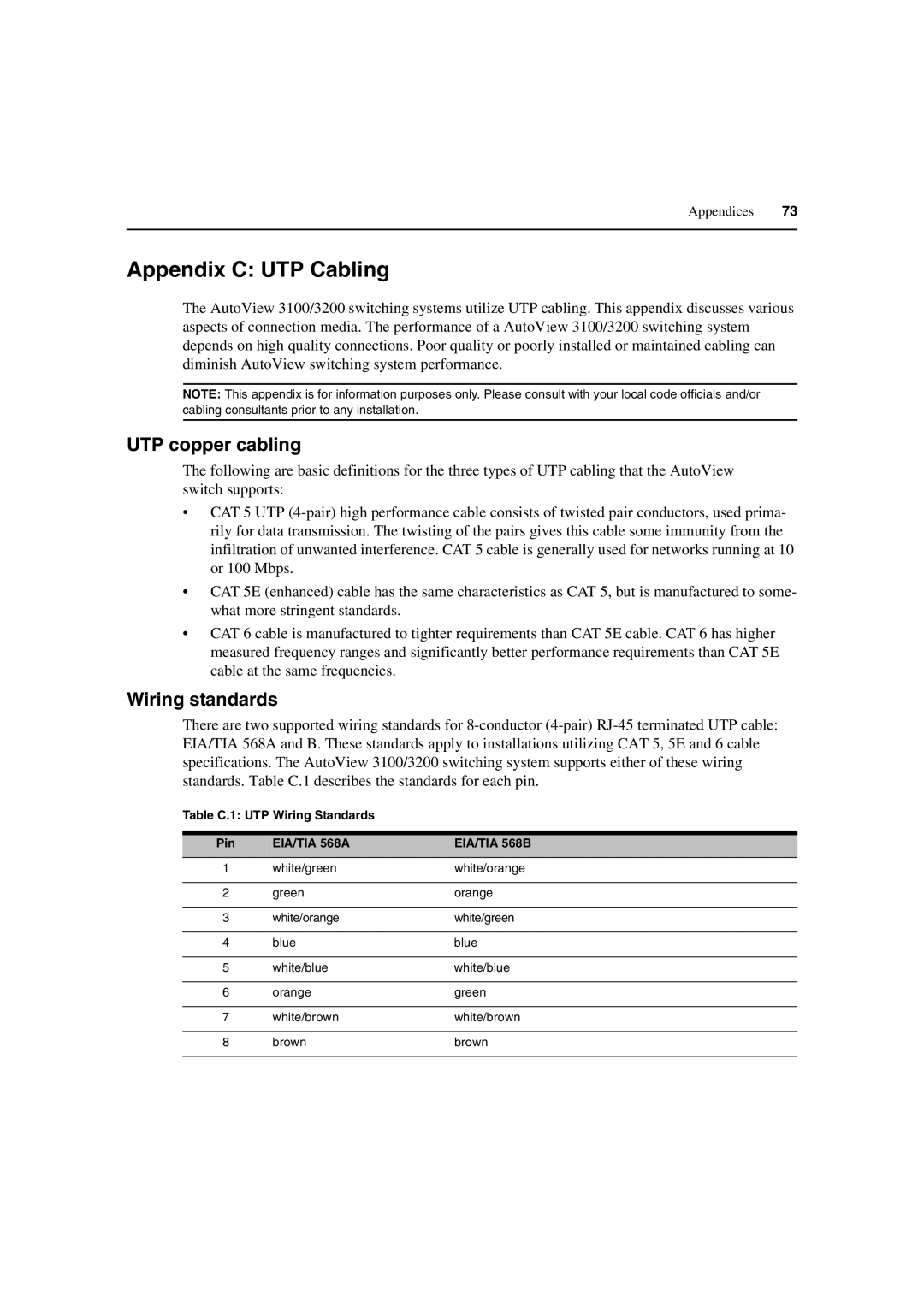
Appendices 73
Appendix C: UTP Cabling
The AutoView 3100/3200 switching systems utilize UTP cabling. This appendix discusses various aspects of connection media. The performance of a AutoView 3100/3200 switching system depends on high quality connections. Poor quality or poorly installed or maintained cabling can diminish AutoView switching system performance.
NOTE: This appendix is for information purposes only. Please consult with your local code officials and/or cabling consultants prior to any installation.
UTP copper cabling
The following are basic definitions for the three types of UTP cabling that the AutoView switch supports:
•CAT 5 UTP
•CAT 5E (enhanced) cable has the same characteristics as CAT 5, but is manufactured to some- what more stringent standards.
•CAT 6 cable is manufactured to tighter requirements than CAT 5E cable. CAT 6 has higher measured frequency ranges and significantly better performance requirements than CAT 5E cable at the same frequencies.
Wiring standards
There are two supported wiring standards for
Table C.1: UTP Wiring Standards
Pin | EIA/TIA 568A | EIA/TIA 568B |
|
|
|
1 | white/green | white/orange |
|
|
|
2 | green | orange |
|
|
|
3 | white/orange | white/green |
|
|
|
4 | blue | blue |
|
|
|
5 | white/blue | white/blue |
|
|
|
6 | orange | green |
|
|
|
7 | white/brown | white/brown |
|
|
|
8 | brown | brown |
|
|
|
